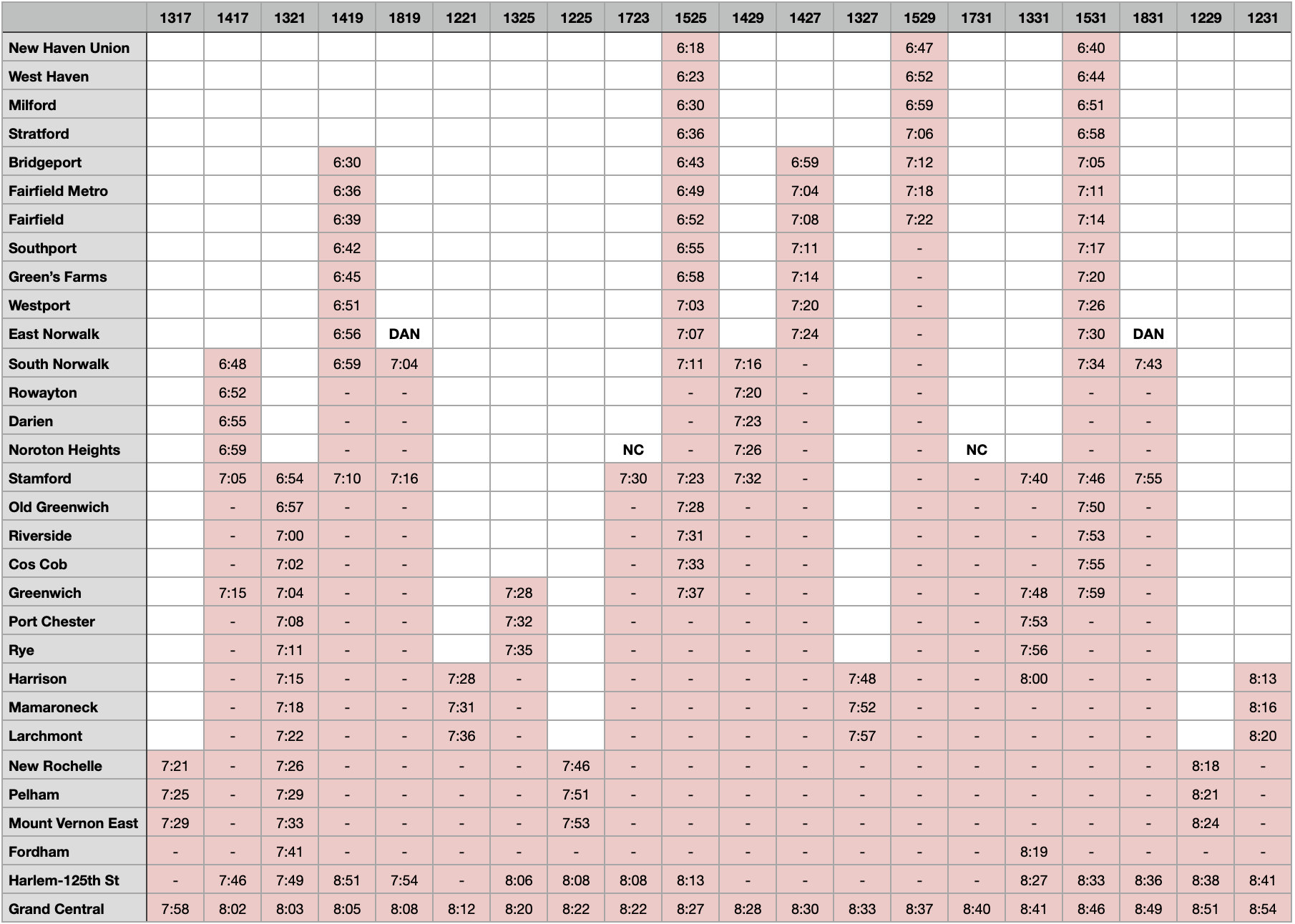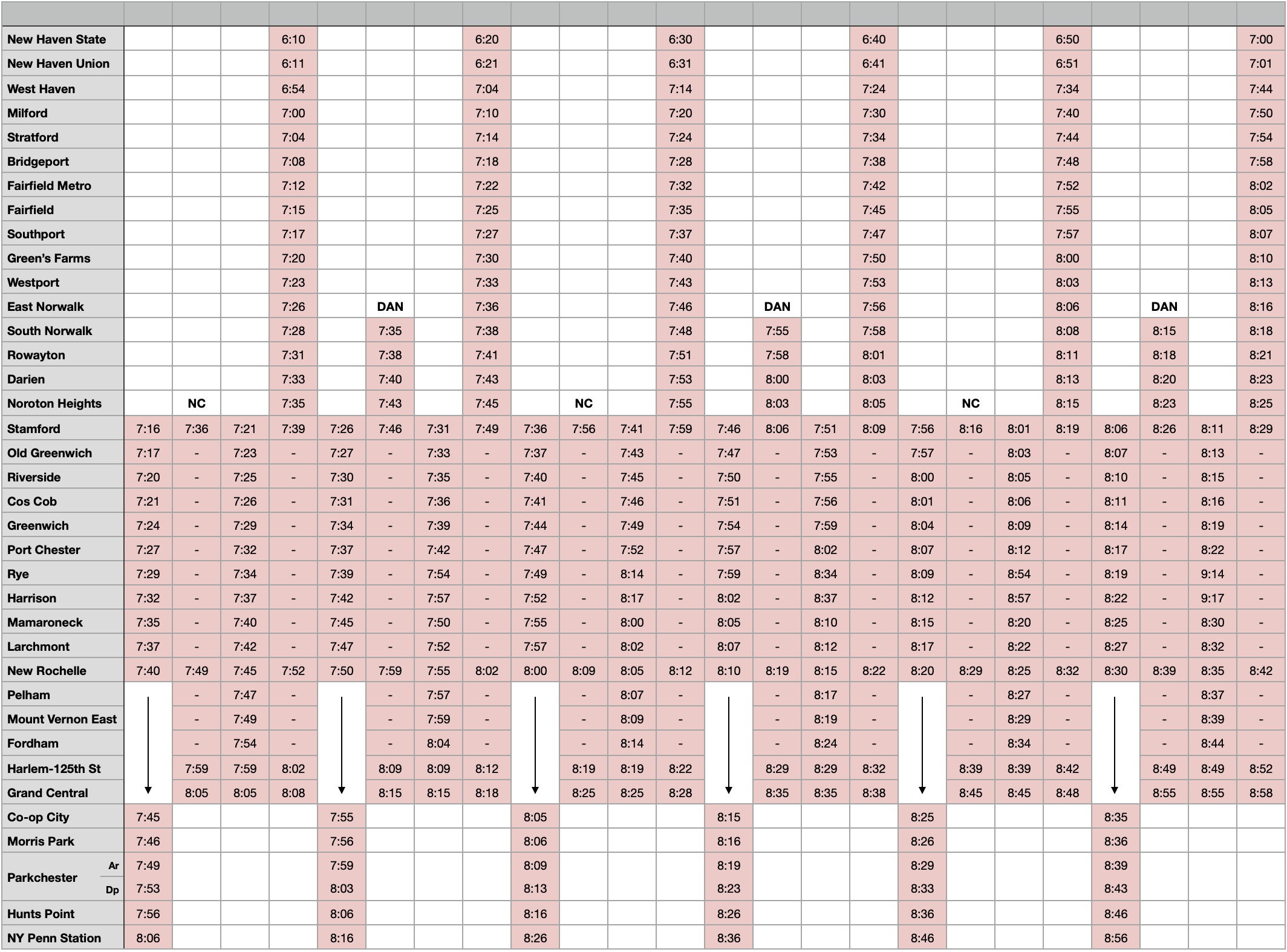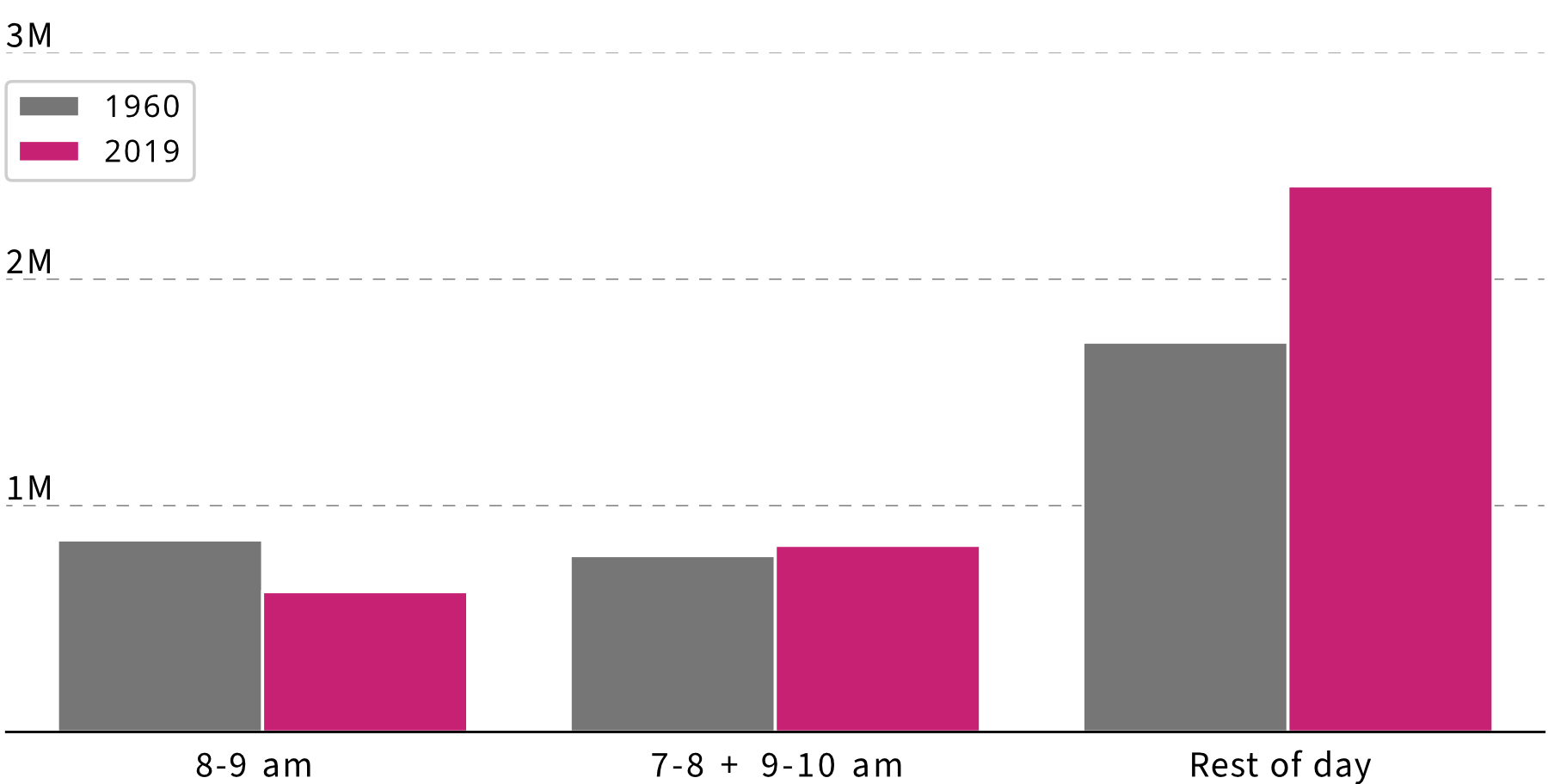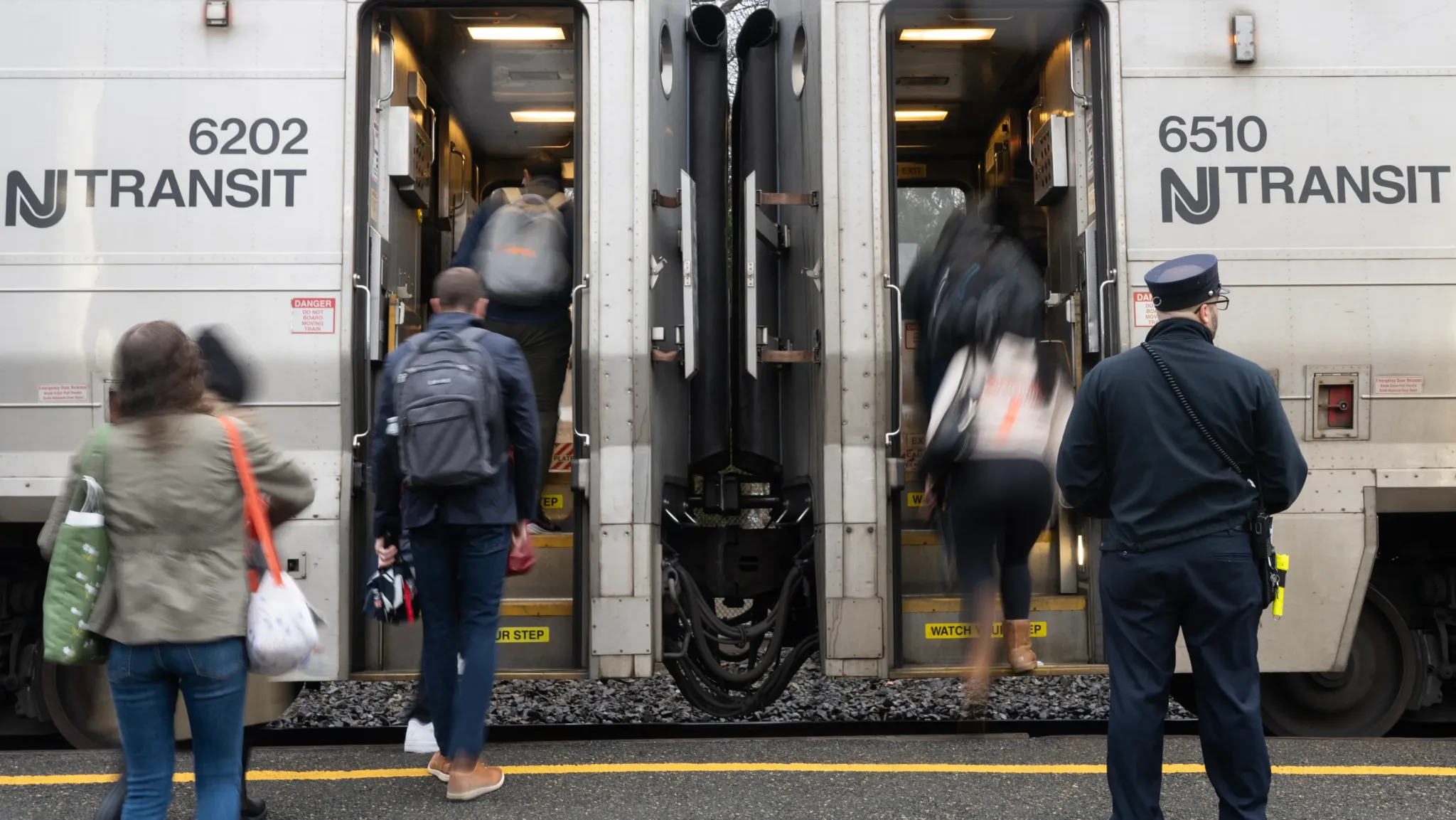COMMUTER RAIL IMPROVEMENTS
BRINGING COMMUTER RAIL TO THE 21ST CENTURY
Introduction
Commuter railroad practice in the United States traditionally focused on bringing in passengers from the suburbs to the central business district during rush hour. Lines could have hourly service off-peak but 10 trains per hour entering the city center at peak, each tailored to serve a handful of suburbs and then run express the rest of the way. To this day, schedules are written to give as many suburban stations as possible nonstop trains to the city center at rush hour and run a fraction of that service during the off-peak periods.
But we don’t live in this world anymore. Peak hour commuting has been declining since the 1960s while off-peak and non-work travel has risen.


Current New Haven Line schedule, showing all the different stopping patterns at rush hour, highlighting that not counting the branches there are 13 of them

People entering the Manhattan core (south of 60th Street) on a weekday
Investments in modernizing commuter rail are required on the NEC as well as commuter rail branches off of it. Replacing the one-off peak schedules with regular all-day ones not only serves 21st-century travelers better, but also allows for precise coordination of commuter and intercity trains, which is necessary for high-speed rail on the existing NEC route.
Two major investments into the physical plant of commuter rail are needed to make this a reality: electrification and high platforms to enable level boarding.
Electrification
Electrification is necessary to modernize commuter and intercity rail; nearly all global ridership on both uses electric multiple units (EMUs), which not only run under overhead wire or occasionally third rail electrification, but also have each car or set of cars powered, without a separate locomotive. The NEC is entirely electrified, but most of its branches are not, and some commuter lines run diesel trains under the wire. These lines should all be upgraded to take EMUs.




Differences in acceleration times for different locomotive types
Trains can be pulled by locomotives or be self-propelled, regardless of whether they run under diesel or electricity. We recommend EMUs, as used on virtually every global commuter rail network.
- EMUs accelerate more quickly than other trains at all speeds.
- Electric trains have half the lifecycle costs of diesel or battery trains, and so are particularly suited to high-traffic lines.
- Electric trains are much more reliable than diesel trains, with 6-20 times the mean distance between failures (MDBF) of diesels on the LIRR and Metro-North.
- Electric trains emit no local pollution, which is particularly important on high-traffic lines with many stops in high-pollution neighborhoods.
Platform Heights
Most of the Amtrak and commuter rail stations on the NEC have 48” high platforms, level with the train floor, allowing fast boarding by all passengers. However, about 40 out of those 110 stations do not, and instead only have raised strips of asphalt, requiring passengers to walk up multiple steps to get on the train. It is necessary to upgrade all of these stations as well as about 80 on branch lines to have high platforms with level boarding, for all of the following reasons:
- Wheelchair accessibility
- Faster boarding
- More reliable dwell times
- Simpler trainsets with better-placed doors, further improving all the above
